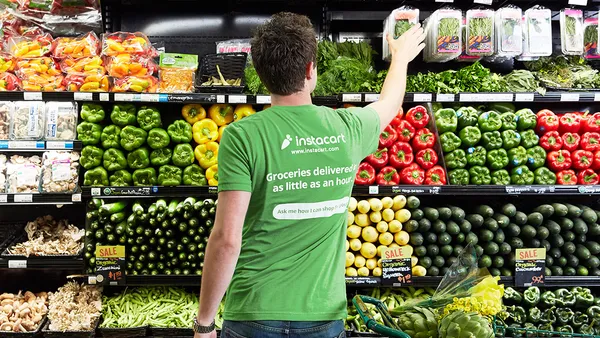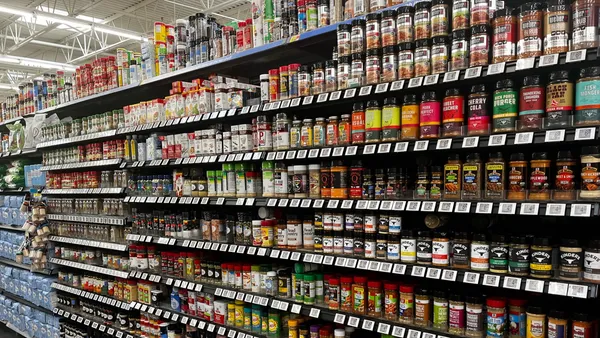You know all that data you've been gathering? It's time to turn it into intelligent insights.
If you are like many grocery retailers, you've been investing in a data lake, stockpiling terabyte after terabyte. Now what are you going to do with it? How can it continue to prove its worth across your organization?
Today, retailers are demanding—and getting—ROI-based data. The goal? To quickly make predictions for the future that they can easily act on today.1
The current state: Data dependency
Big Data promises much but it takes a data scientist to deliver it.
- First retailers must amass the data
- And then data scientists must decipher what it means
The result:
- 23.1% projected compound annual growth rate for big data analytics in retail from 2021 to 20282
- 650% increase in data science jobs since 20123
Advance to the future state: Data democratization
There was a time when more data implied more success. Now, it's far more important to know how to use the data to make the right business decisions.
Some retailers are adding more data scientists to achieve their analytics goals. Effective technology solutions should support the data scientist, but also empower anyone to get fast answers cost effectively. What if you could democratize data so it can be used by more people to conduct reliably repeatable A/B testing?
Dimension your data to enrich your analysis
Making data more accessible starts with making it highly useful enterprise wide. Point-of-sale data is the lifeblood of A/B testing for retailers. You gain insights specific to financial performance, customer preferences, basket dynamics, geographic variations and more. But the more data you have the more unwieldly it can be.
Think of it this way: Data enables you to really "see" your customer and the opportunities to expand your relationship with them. But more data can blur that vision if you aren't able to focus on what's most relevant to them (and you) in the moment.
Sales summaries give you some insights, but data at the transaction level tells you what someone has in their basket. By dimensioning your data using sophisticated labeling you reveal opportunities: What SKUs sell on Tuesdays more than Sunday? At 8 a.m. vs. 8 p.m.? What influences one region over another or a larger store over a smaller footprint?
Your A/B testing discipline should make it easy to parse your data within transaction, product and store attributes. This is how you get robust insights so you can predict with confidence.
What it means to be reliably repeatable
The concept of confidence is critical. Your data and anything you've integrated from other sources need to come together to create a source of truth.
- How certain are you in your statistical models?
- How vulnerable is the data to bias or manipulation, depending on a stakeholder's point of view?
- What checks are in place to validate the results?
Your decision makers are staking their reputations on the testing; they need to be able to trust the numbers.
The objective of A/B testing is to fail fast and learn. But if the data is compromised, you won't learn. You'll just fail without knowing why you failed.
Broader data sets drive more insights
From marketing and pricing to store operations and category management, many brick-and-mortar retail departments have different ways of measuring success:
- Promotional sales
- In-store traffic
- Margin
- Customer satisfaction
- Labor hours
- Inventory turn
Your A/B testing strategy should allow anyone to ask and answer their business-critical questions with an objective approach that expects success or failure.
Adopt a testing culture by implementing a user-friendly way to test
Adopting a culture of testing and experimentation requires organizations to go beyond being data driven. It's not about just adding analytics and people, but rather improving access to insightful data to a broader set of people through user-friendly tools. In parallel, a testing culture is supported by analytically oriented business leaders who enable their teams to test and fail fast.
Visit www.marketdial.com to learn more about creating a culture of experimentation.
1. https://independentretailer.com/how-data-analytics-is-impacting-retail-in-2021/
2. https://lambdaschool.com/the-commons/data-science-job-growth-in-2021-and-beyond
3. https://towardsdatascience.com/is-data-science-still-a-rising-career-in-2021-722281f7074c










